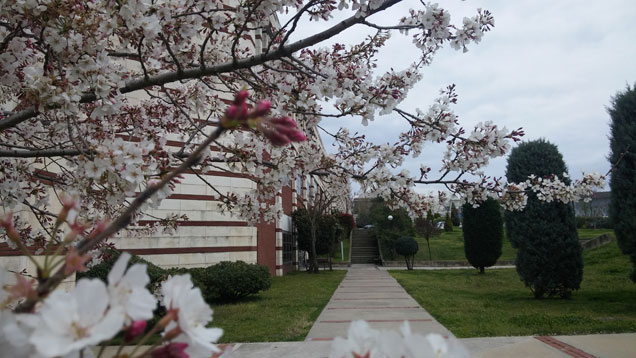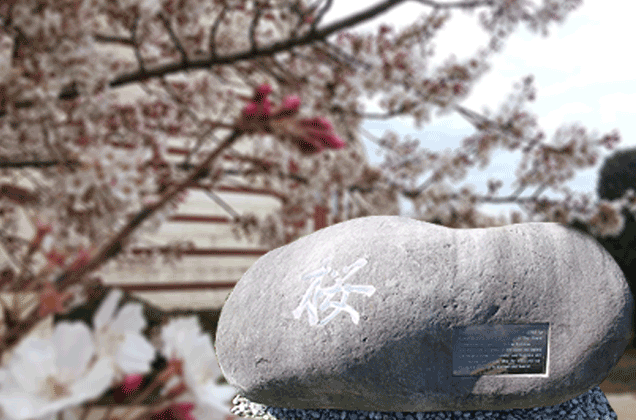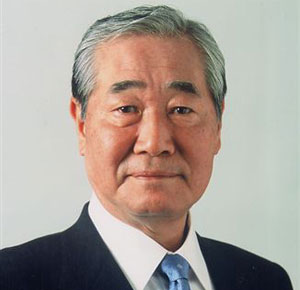21/03/2016
Komatsu donated various species of the Sakura to Sabancı University between 2007 and 2009. The extremely delicate saplings required great effort to nurture, as a result of which 1440 trees developed healthily. Although the exact time may vary by year, the Sakuras on campus bloom sometime between the end of March and beginning of April, much like those in Kyoto, Japan. The Sabancı University campus has Turkey's largest Sakura collection.

In the years that went by, the Sakuras on campus grew and some reached a height of 4 meters. In time, the trees will grow even taller and provide a pleasant setting for picnics, friendly chatter or studying in their shade.
Toshitaka Hagiwara | As a token of Turkish-Japanese friendship, a monumental stone weighing 3.3 tons was inscribed with the Japanese for "Sakura" written by Toshitaka Hagiwara, the President of the Japanese Flower Foundation established by Komatsu, the donor of the Sakuras on Sabancı University campus, and the former CEO of Komatsu Holdings from 2003 to 2007. |
The stone comes from Gujyo, a city in the Gifu prefecture located in the center of Japan. More than 10,000 years have passed since the stone was made and the round shape of the stone was formed naturally by the torrent of the river. Therefore, it represents that the stone can endure any hard struggle.

There are 7 varieties of Sakura on the Sabancı University campus. These varieties are: Prunus x subirtella ‘Autumnalis’, Prunus lannesiana ‘Antiqua’, Prunus lannesiana ‘Hisakura’, Prunus lannesiana ‘Hanagasa’, Prunus lannesiana ‘Sekiyama’, Prunus x yedoensis ‘Yedoensis’, Prunus lannesiana ‘Surugadai-odora’

What is Sakura? The significance of the Sakura in Japanese culture
Sakura, or Prunus Serrulata ("Japanese Ornamental Cherry") blooms annually, starting with the island of Okinawa in January. The trees in Tokyo and Kyoto bloom in late March to early April, and the season concludes with the blossoms in Hokkaido, in northern Japan. When the infinitely beautiful Sakuras blossom, Japanese people flock to parks, gardens and temples for blossom-watching parties, called "hanami." Hanami, or having picnics underneath Sakura blossoms is a centuries-old tradition in Japan.
In Japanese culture, Sakuras are likened to clouds because of their color and appearance from a distance. For many people, walking underneath a cascade of Sakura blossoms is akin to walking under snowfall. Festivals are held throughout the country to celebrate this act of nature. The significance of the blooms is not due to their exceptional beauty alone: for the Japanese, the blossoming of cherries symbolizes starting life anew. Being very short-lived, the blossoms also symbolize the temporality and brevity of life. Sakura inspires poems and songs.
It is known that kamikaze pilots drew this blossom on their planes before taking off for the last time. The Sakura was also used as an analogy to keep spirits up during the war. It is also said that the first kamikaze battalion had a unit named "Yamazakura" or "wild cherry blossom." Common belief is that fallen warriors are reincarnated in cherry blossoms.
Sakura is also a woman's given name in Japanese, and the blooming season is called "Sakura zensen." Not only do the Japanese celebrate the blossoming of cherry trees, but they also arrange important life events, marriages, starting a new job and going on vacation according to Sakura zensen. The cherry blossom has a phenomenal presence in Japan. Thousands of tourists from all over the world arrive in Japan every year to take part in festivals held in 26 parks across 11 provinces. Celebrating the blossoming of cherry trees is not limited to Japan. Other countries that turn this glorious natural event into a festival include the United States, Canada, Germany and the Philippines.
Photo credit: Nesrin Balkan





